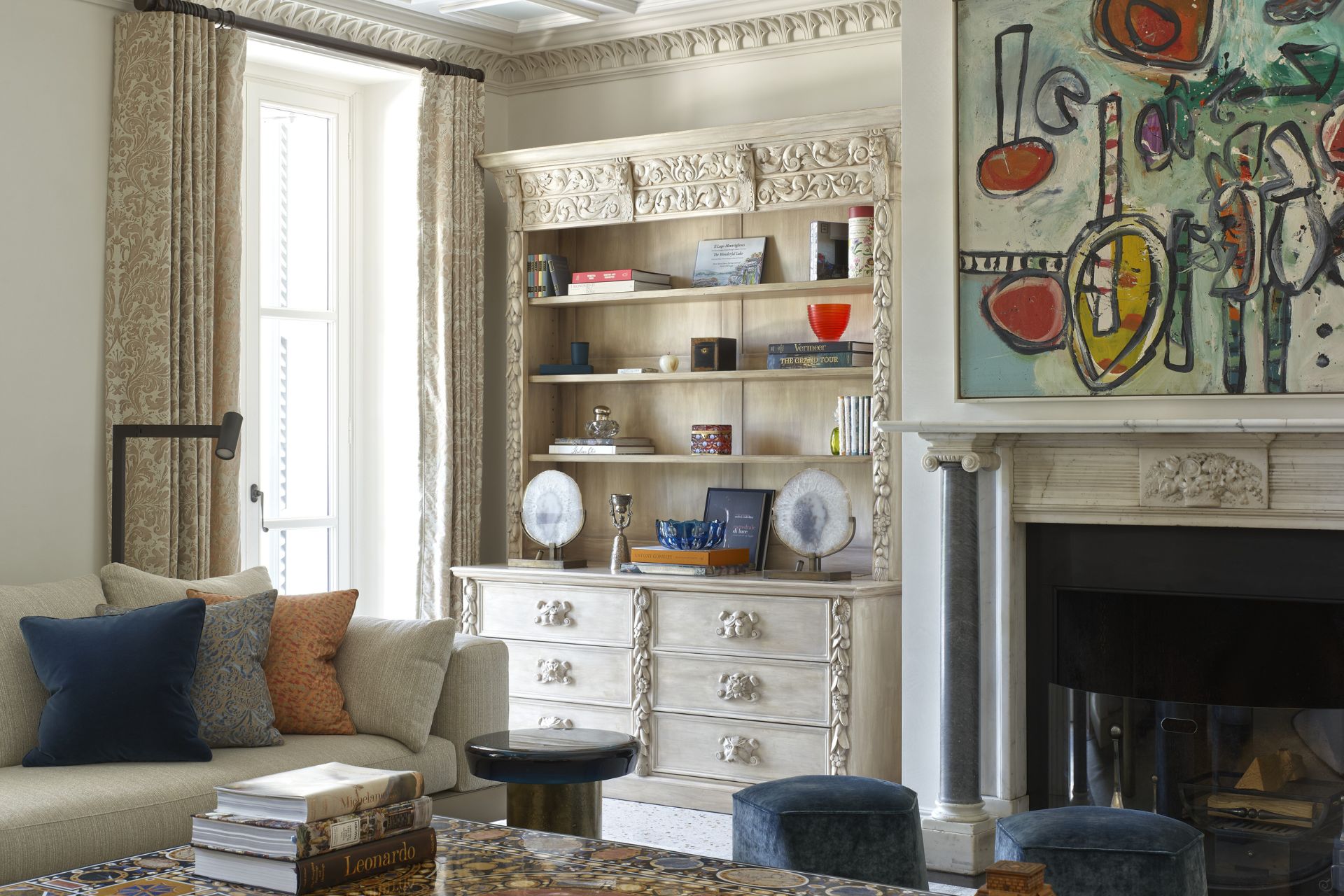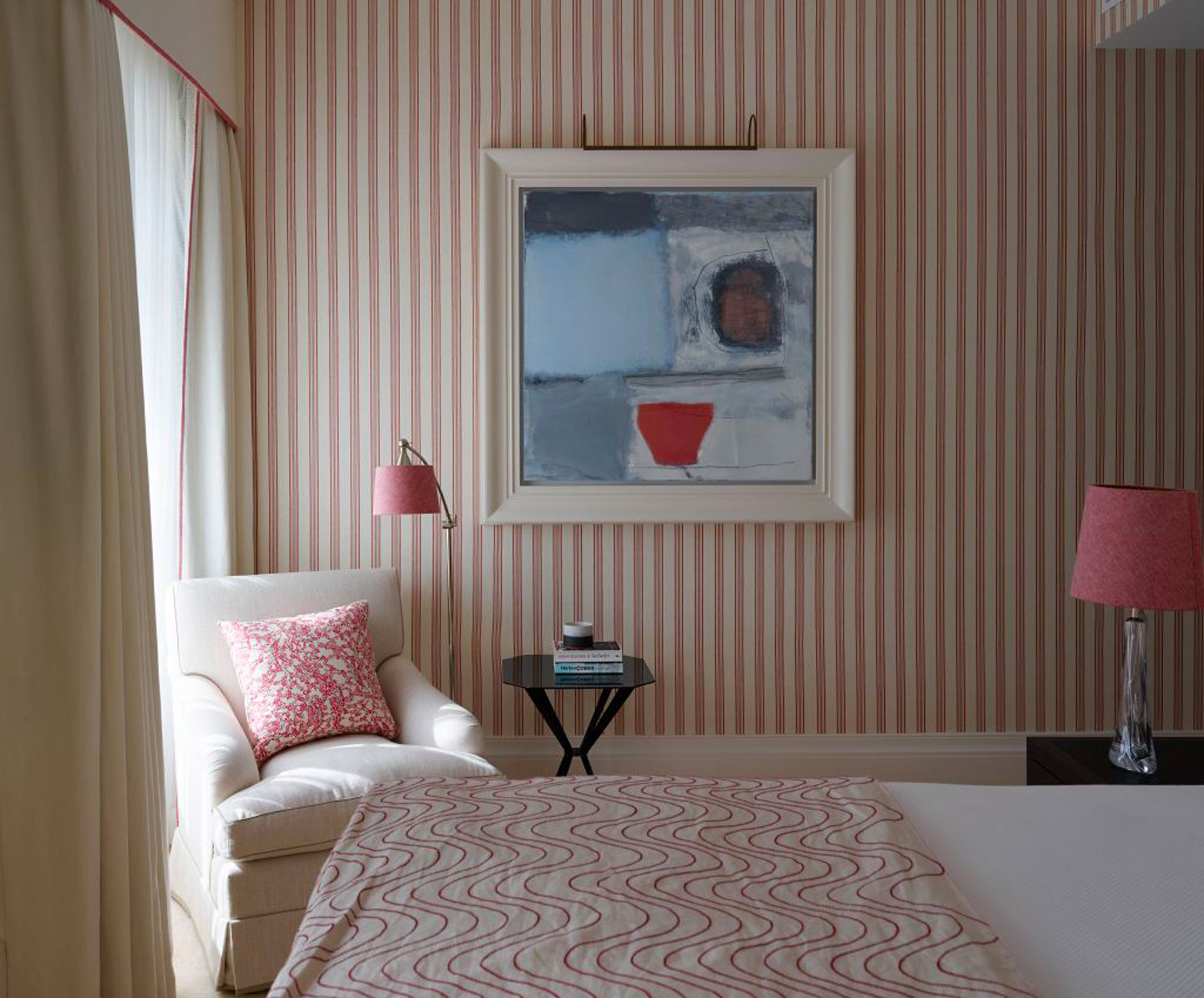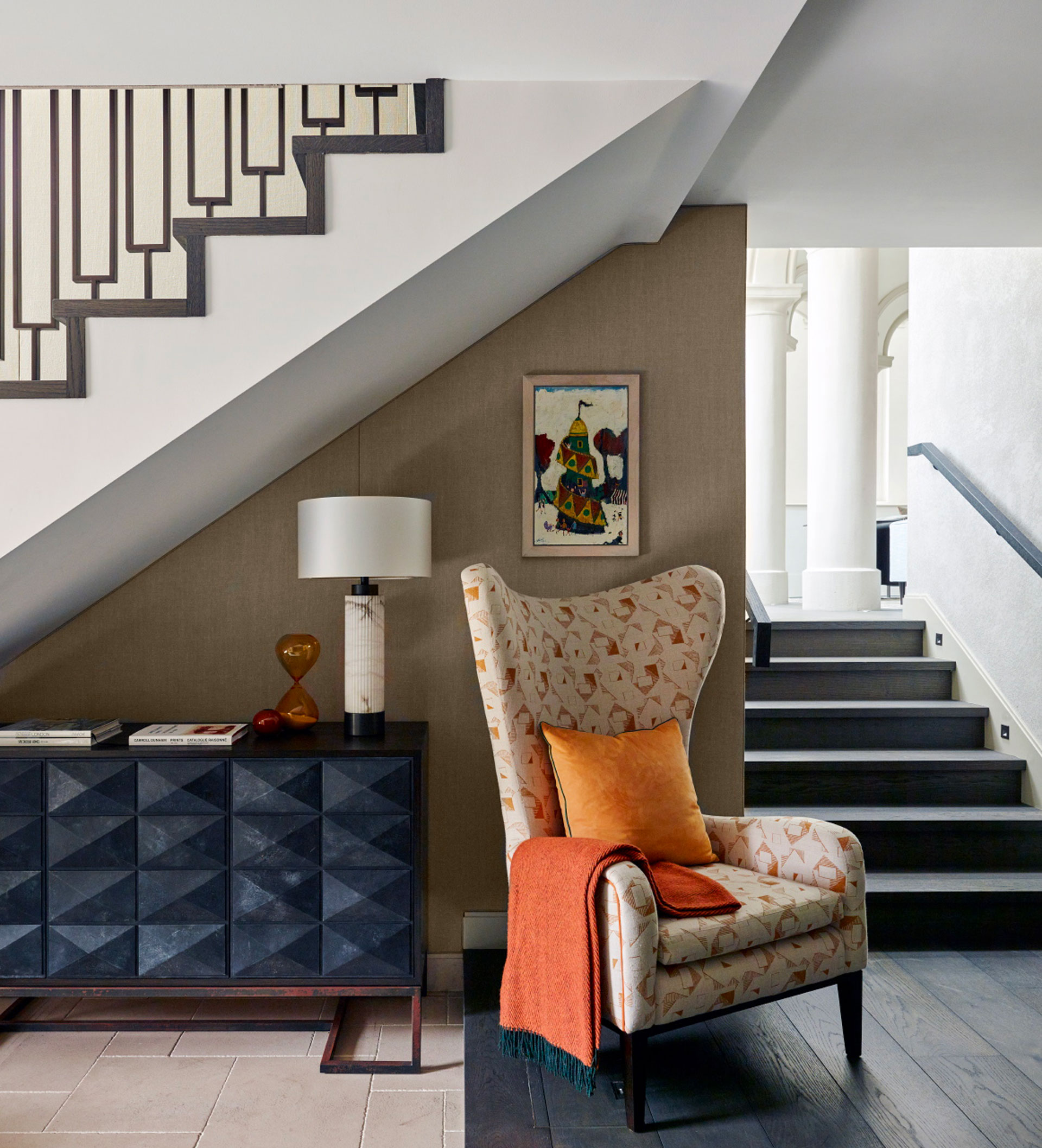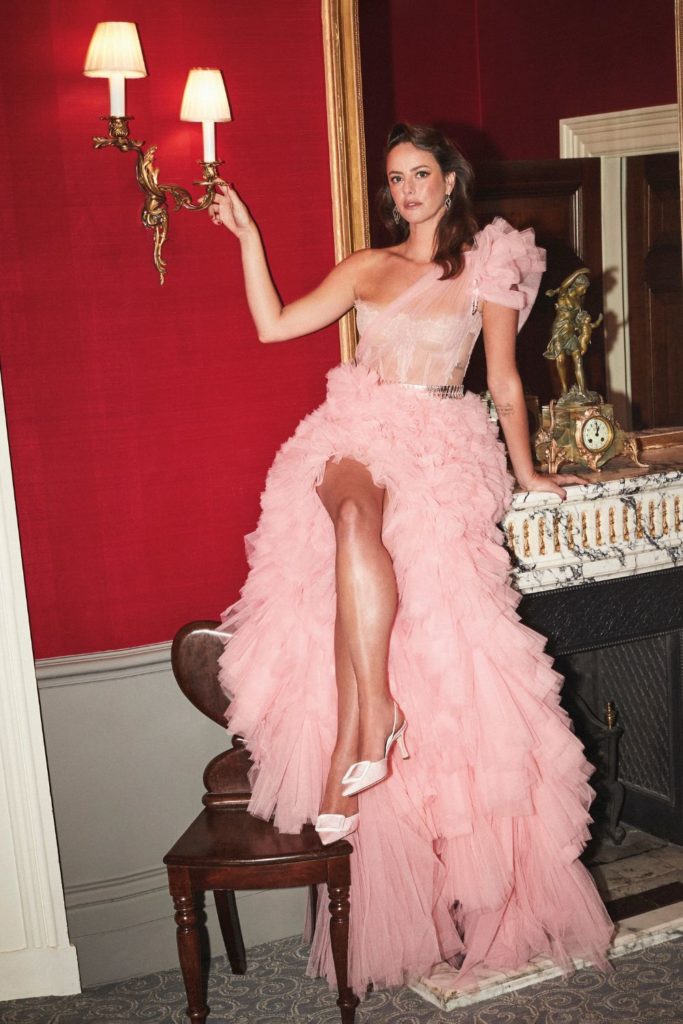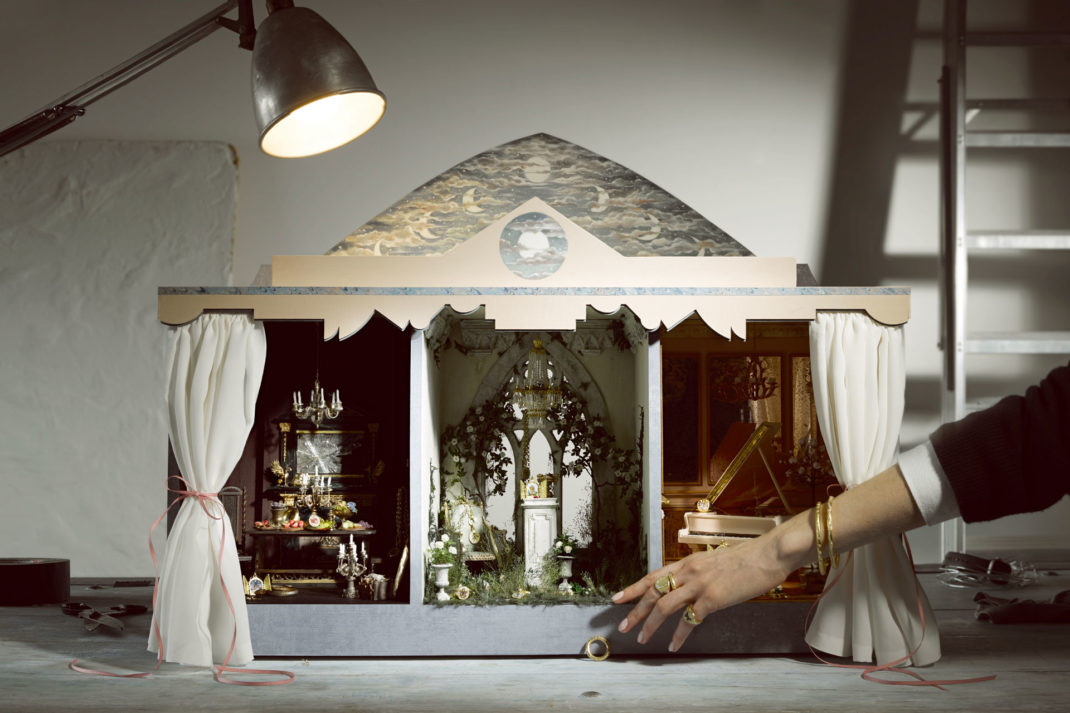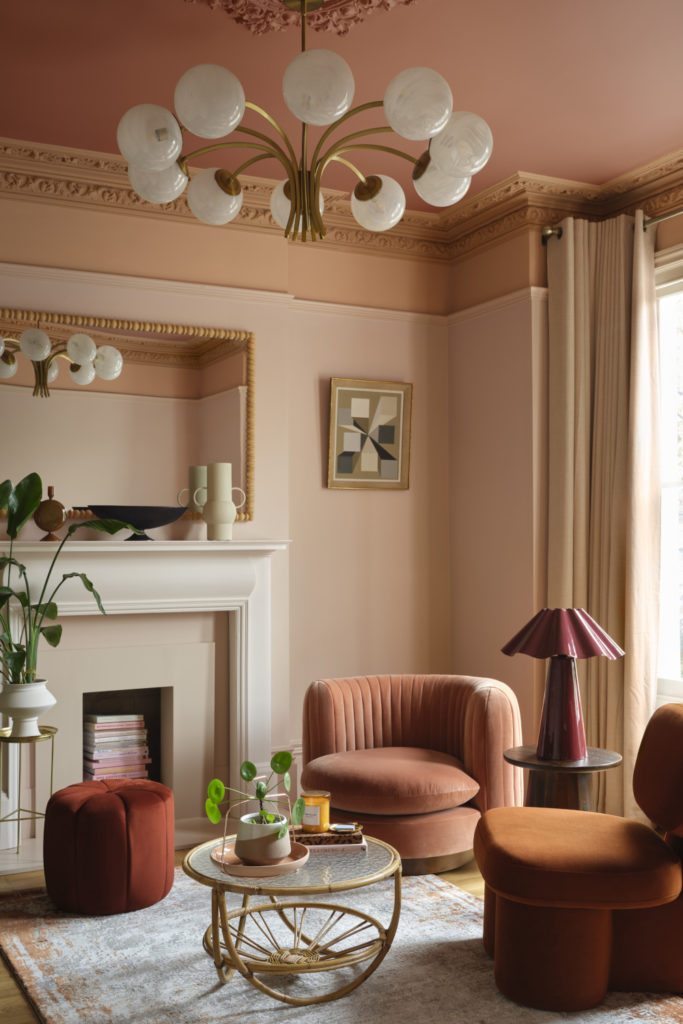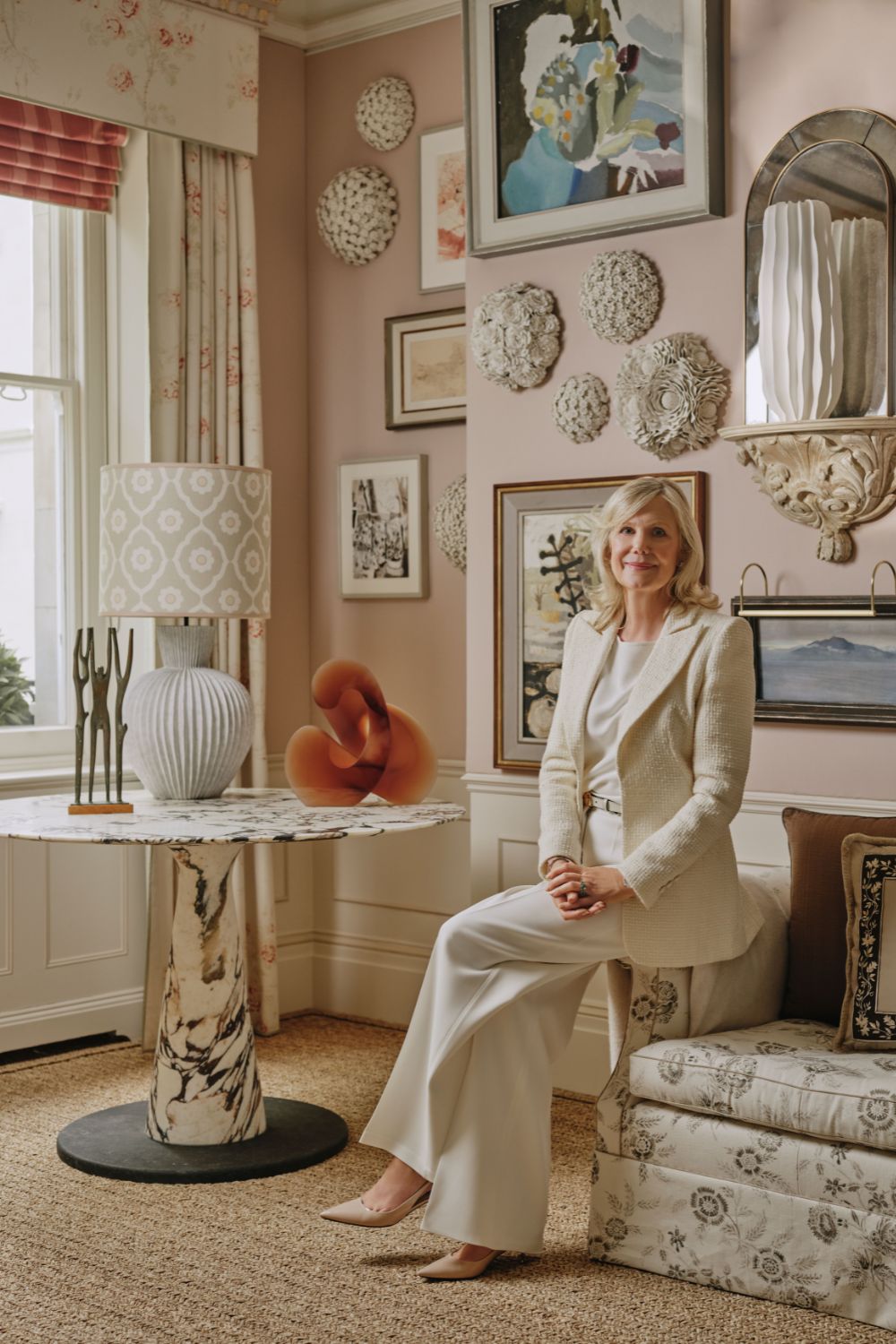
Philippa Thorp On How To Combine Art Curation & Design
By
3 weeks ago
Interior designer Philippa Thorp on why art should never be an afterthought – and how to create a home that tells your story.
Most of us think about furniture, paint colours or layout long before we think about art. But when it comes to creating a home that feels complete, art often comes first. To prevent you (literally) staring at a blank wall, we asked interior designer Philippa Thorp to give her verdict on how to incorporate art into your home design scheme.
How To Curate Art For The Home
1. Treat Art As The Punctuation For Your Design Scheme
‘Art and design have always gone hand in hand, but they play very different roles,’ says Philippa. ‘Design is the framework – the architecture, the palette, the rhythm of a space – whereas art is the punctuation within that story: a moment of emotion, curiosity or reflection. It can transform a room entirely.’
For Philippa, the two form a dialogue. ‘In interiors, art might be the piece you hang, but design is everything that surrounds it – the proportions of the room, the line of an architrave, the plasterwork on the ceiling. It’s the silent composition that leads your eye – the invisible arrows – that draw you towards the art itself. Together, they complete the story.’
2. Starting An Art Collection Begins By Building Taste, And Then Your Expertise
‘The best place to start is with curiosity,’ she says. ‘Spend time visiting galleries, museums and auctions – large or small. The more you see, the more you develop an instinct for what moves you.’
Philippa likens collecting to investing. ‘You wouldn’t invest in a company without researching it first; it’s the same with art. Learn about the artists, their stories and their techniques. Never buy because someone tells you to or because it simply “fits” a wall – buy because you love it.’
For first-time collectors, she suggests starting with affordable works on paper or limited-edition prints. ‘As your confidence grows, you can begin investing in original pieces. Many clients start out hesitant but soon fall in love with the process – and it’s through that passion that true appreciation, and then value, is found.’
3. Hanging Art Shouldn’t Follow Hard & Fast Rules
‘There are no hard rules,’ she says. ‘Hanging art is instinctive. Much like painting a canvas, you feel where energy or stillness is needed. It’s about creating visual equilibrium.’
Her approach is rooted in experience. ‘My father was an artist, and creativity was part of daily life – from beautifully illustrated Christmas labels to spontaneous sketches. That early exposure shaped how I see balance and storytelling through space.’
Whether private or public, Philippa believes the arrangement of art should always serve people first. ‘Successful spaces are sympathetic to human need – they enhance wholesomeness. Successful design, whether public or private, is always humanistic.’
4. Don’t By Shy To Mix Different Eras Of Art
‘The beauty of combining contemporary and antique works lies in creating a sense of timelessness,’ Philippa says. ‘A well-balanced mix makes a space feel layered and authentic.’
The secret, she adds, is to let the conversation between eras feel natural. ‘At Thorp, one of our core philosophies is to invest well, once. Quality craftsmanship, whether antique or modern, always endures – and it’s often the guiding light for the pieces we select.’
5. The Most Common Mistakes People Make: Framing And Overcrowding
‘Poor framing is the most common mistake people make with art at home,’ she says immediately. ‘A wonderful piece can be completely diminished by an unsuitable frame.’
Another is overcrowding. ‘Give each work breathing room so it can be appreciated properly. And don’t rush to fill a blank wall – art should be collected slowly, with intention. The most meaningful collections evolve over time, reflecting experience and taste rather than impulse.’
6. Buy Well – Once
‘Don’t treat art as just something to hang on the wall,’ she says. ‘And don’t buy tut – in art or in clothing – because you’ll only end up wanting to move on from it. Buy less, but buy better. Invest well once, and let your collection evolve naturally. Most of my clients have made money on their art over time, but that was never the goal. If you buy for love, value tends to follow.’

